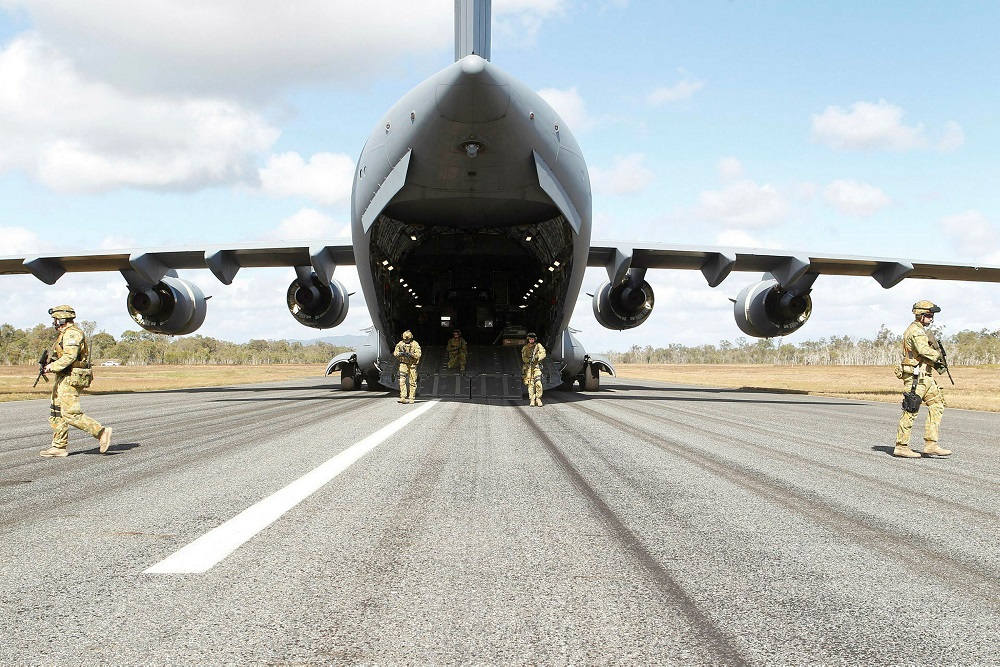
The Russo-Ukrainian war has burst the bubble of those who had assumed that future wars would be fast and furious affairs. While we have many lessons to learn from the first six months of this war, it seems clear that logistics and infrastructure matter as much in major conflict today as they did in World War II. This lesson isn’t good news for Australia’s defence organisation, which is too comfortable with relying on ‘plugging in’ to US infrastructure. The three decades of relative peace Australia has enjoyed since the end of the Cold War has degraded our prioritisation of and investment in future-ready defence and multi-use strategic infrastructure.
The strategic uncertainty we now face requires a paradigm shift in our way of thinking about this infrastructure, especially in Australia’s north. The recently announced defence strategic review provides the perfect opportunity to get that process started.
The government needs to take a longer term perspective on defence and multi-user infrastructure that considers a range of future contingencies. The upgrades to the airfield in the Cocos (Keeling) Islands under Defence Project 8219 to support the operation of the Royal Australian Air Force’s P-8A Poseidon patrol aircraft show our siloed, short-term thinking in action. This critical investment will ensure the airfield is long and wide enough to support P-8s. However, Defence hasn’t synchronised the project with other requirements, which means a lost opportunity. Nor is this investment focused on ensuring that defence infrastructure on Cocos (Keeling) Islands is future-ready; instead, it will just be good enough for now.
Defence needs to revisit its assumptions about infrastructure. An example of this issue is Defence’s bare bases: RAAF Base Scherger near Weipa in Queensland, RAAF Base Curtin near Derby in Western Australia and RAAF Base Learmonth near Exmouth, also in WA. These bases, built in the 1980s and 1990s, were constructed to enhance the air force’s ability to mount operations in defence of Australia. Today, these facilities are more important than ever. But their full utility can’t yet be realised because they’re plagued by challenges, including poorly maintained roads and untested supply-chain assumptions.
Defence needs to reacquaint itself with the forgotten multi-user infrastructure in northern Australia. Across the region, many pieces of infrastructure have national-security significance. Some of these sites have slipped from strategists’ calculus, like the fuel storage on Melville Island near Darwin. Planners also take many pieces of infrastructure, like some of the smaller jetties and piers in northern Queensland, for granted. Defence needs to take on a greater role in ensuring these facilities continue to operate.
There are also cases where potentially strategically important facilities and infrastructure are no longer commercially viable, so they risk falling into disrepair. In Gove in the Northern Territory, the Nhulunbuy Rio Tinto mine will close within a decade. And with it will go a potentially important fuel storage facility.
In northern WA, the Mungalalu Truscott Airbase is a sealed, all-weather runway that’s 1,800 metres long and 30 metres wide and provides significant efficiencies for aviation operations in the Kimberley region and the Timor Sea. It played a critical role in the defence of Australia during the Second World War. The airfield runs the risk of being shut down as WA government policies focused on making Broome (more than 600 kilometres to the southwest) a hub airport for the mining industry diminish Mungalalu Truscott’s commercial viability.
Ownership of our infrastructure is also an issue that the government ought to consider in more detail for multi-user infrastructure. Much has been written about the lease of Darwin Port to Chinese-owned company Landbridge. The public debate on the lease often doesn’t consider Landbridge’s control over the port’s future development. Especially where the future development interests of the lessee and the Australian government might be divergent.
Finally, Australia’s strategic circumstances are rapidly evolving. The recent signing of the security pact between Solomon Islands and China is a case in point. Darwin has long been considered a forward operating base in a time of crisis. Our approach to infrastructure in Darwin is focused on achieving a higher degree of readiness than in Townsville or Cairns, which have long been garrison towns—places where capabilities are raised, trained and sustained. The Solomon Islands security pact may indeed change this strategic calculation. We must consider whether Cairns and Townsville should also be potential forward operating bases in light of this development. If so, much will need to be done in these cities to support target hardening, supply-chain resilience, and defence and multi-user infrastructure.
This sort of readiness won’t just happen and can’t be left to market forces. But neither can it be left to Defence to start a multi-year analysis of the problem, which would delay real action even further. The government must include these considerations in its defence strategic review. Thankfully, that review is set to report back early next year and, if done right, its findings could set the ball rolling on positive developments for northern Australia and the defence of the continent more broadly.
 Print This Post
Print This Post